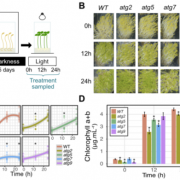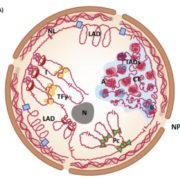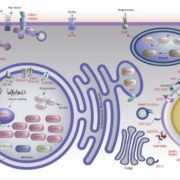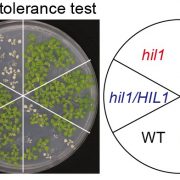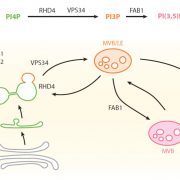Insights into the evolution of multicellularity from the sea lettuce genome (Current Biol. – $)
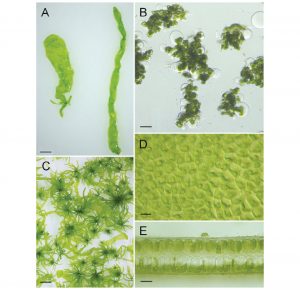 The transition from unicellular to multicellular life forms occurred across multiple kingdoms, and in plants is correlated with the expansion of gene families involved in extracellular matrix formation and cell cycle regulation. Green seaweeds acquired their plant-like body independently of other lineages and display wide form diversity. Sea lettuce, Ulva mutabilis, exhibits two morphological forms – flattened leaf-like structures or unicellular tubes – induced by the presence of bacterial communities. Ulva genome, sequenced by De Clerck et al., provides insight how the multicellular form arises possibly due to interaction with the environmental factors. Ulva genome is not only lacking genes typically involved in cell cycle entry and angiosperm-like hormone receptors, but has increased number of CONSTANS-like transcription factors and trans-membrane protein kinases linked to extracellular protein domains, which might be involved in integration of environmental signals. (Summary by Magdalena Julkowska) Curr. Biol. 10.1016/j.cub.2018.08.015
The transition from unicellular to multicellular life forms occurred across multiple kingdoms, and in plants is correlated with the expansion of gene families involved in extracellular matrix formation and cell cycle regulation. Green seaweeds acquired their plant-like body independently of other lineages and display wide form diversity. Sea lettuce, Ulva mutabilis, exhibits two morphological forms – flattened leaf-like structures or unicellular tubes – induced by the presence of bacterial communities. Ulva genome, sequenced by De Clerck et al., provides insight how the multicellular form arises possibly due to interaction with the environmental factors. Ulva genome is not only lacking genes typically involved in cell cycle entry and angiosperm-like hormone receptors, but has increased number of CONSTANS-like transcription factors and trans-membrane protein kinases linked to extracellular protein domains, which might be involved in integration of environmental signals. (Summary by Magdalena Julkowska) Curr. Biol. 10.1016/j.cub.2018.08.015


